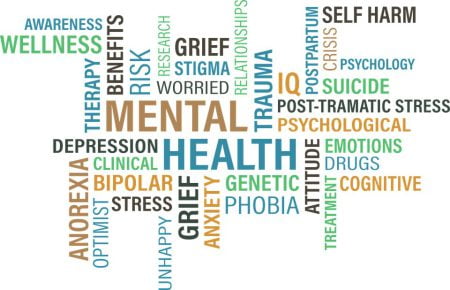Phobia is the extreme and persistent fear of specific objects in the environment, place, or situation. Some common phobias are ophidiophobia (fear of snakes), anthrophobia (fear of people), aerophobia (fear of flying), hydrophobia (fear of dogs), hematophobia (fear of blood), and nyctophobia (fear of darkness). Phobias cause anxiety, stress, depression, and panic attacks among people. Extreme phobias may affect your personal and social life. Phobia may lead to anxiety disorders, hallucinations, obsessive-compulsive disorders, and schizophrenia.
How Phobia Affects the Brain Activity?
It has been observed through some brain imaging tests, especially magnetic resonance imaging (MRI), that phobias are associated with some alterations in brain activity. Following are some of the examples of brain alterations that may be caused due to phobias:
- People suffering from phobias have an increased activity of the amygdala. Amygdala is an almond-shaped structure present deep inside the brain’s temporal lobe behind the pituitary gland. Amygdala is involved in controlling emotions, survival, instincts, and memory. Thus people with phobias may have difficulty controlling their emotions, lack survival instincts, and have memory problems.
- When a person with phobia gets scared of something, a frightened response is generated in the amygdala, which further activates the brain’s motor areas (which are responsible for fight and flight response). This, in turn, leads to the activation of stress hormones like adrenaline and the sympathetic nervous system.
- A study suggests that the right amygdala becomes highly active when an individual encounters negative emotions like fear associated with phobias. On the other hand, the left amygdala is associated with positive emotions like pleasure and love. Since the right amygdala is associated with negative emotions, it becomes overactive in people who have a phobia.
- Another study revealed that some other brain structures, including stria terminalis (band of fibers between claudate nucleus and thalamus), the insular cortex, and anterior cingulated cortex, became hyperactivated in people exposed to situations or objects that trigger the phobia. These structures of the brain are usually involved in controlling emotions and decision making. Even small exposures to phobic situations can strongly activate the subcortical regions of the brain. According to this study, prolonged exposure to phobic situations does not slow down brain activity, but it may engage some specific areas of the brain.
- Sometimes phobic people develop an exaggerated feeling that they can encounter the object of their phobia, called expectancy bias. According to some researchers, this expectancy bias is due to the under activity of the lateral prefrontal cortex and the brain’s visual cortex. There is a lack of cognitive control to the phobia-inducing object in phobic people, which prime a phobic individual to expect an encounter with the object causing the distress. Due to all this, the brain activity is altered in such a way that a rope may appear to be a snake to such people, or a thread may appear to be a spider in settings where there are no snakes or spiders.
How Phobia Alters the Brain Chemistry?
- Research studies have proved that anxiety disorders and phobia may alter the chemistry of the brain. Specifically, serotonin level is disturbed in phobic response.
- Serotonin is a neurotransmitter that helps in the transmission of signals between nerve cells and other cells. Serotonin is secreted by neurons into the synaptic junction (a gap between neurons) and can transmit the signal to the brain. Serotonin has a function in regulating behavior, appetite, digestion, and memory.
- Some research studies observed that serotonin level gets dysregulated due to anxiety issues and phobia. Both high and low serotonin levels lead to distress, anxiety, and fear, resulting from phobia.
- Phobias can be treated with a specific type of antidepressant drug called selective serotonin reuptake inhibitors (SSRIs). These serotonin inhibitors prevent the reuptake of serotonin and thereby increasing serotonin levels in the brain. This will help regulate serotonin levels in the brain so that transmission through nerve cells takes place more efficiently. Following are some of the serotonin reuptake inhibitors which can be given to phobic people:
- Escitalopram (Lexapro),
- Paroxetine (Paxil)
- Sertraline (Zoloft)
- Prozac
- Serotonin inhibitors must be used very cautiously by the patients as they can cause some side effects also. The side effects of SSRIs are:
- Dizziness
- Blurred vision
- Feeling of being agitated
- Low sex drive
- Sick Feeling






